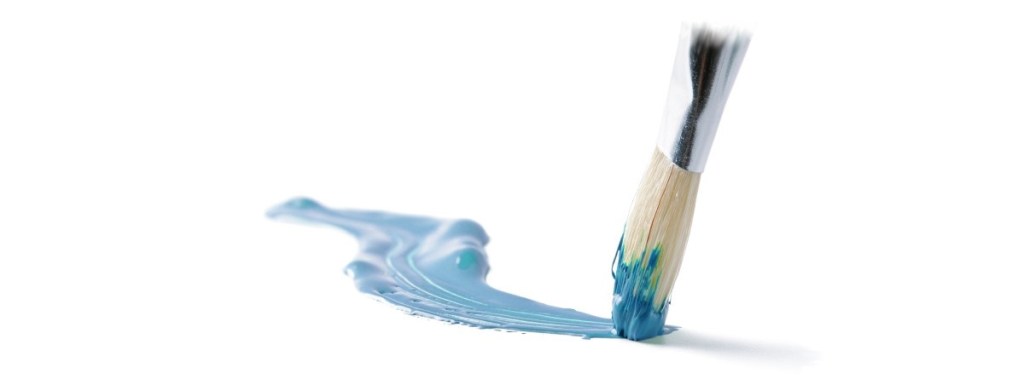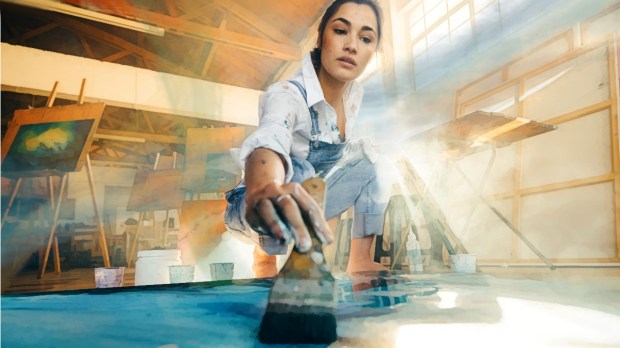Lenten Campaign 2025
This content is free of charge, as are all our articles.
Support us with a donation that is tax-deductible and enable us to continue to reach millions of readers.
I used to be a painter. Not a very good one, but I tried. Back before six children and the toys and clothes and books of six children filled up my house, I had space for a studio. There, I would happily spread out with my oil paints and canvases. I’d try to remember my lessons from college art classes, listen to music, and fall into a reverie of creativity. I no longer have the time or space to paint. I still love art, though, and think a lot about its purpose and why we’re so drawn to it.
Art is meant, above all, to convey transcendent beauty. It makes a connection between heaven and earth. This is true of visual art, music, writing, and any other decorative art we can bring to mind. It’s all a reflection of and communication of God’s glory.
It’s a wonderful thought, but because of this, even if I had time, I would be more hesitant today about throwing myself into casually painting angels and saints. I would be more cautious about painting in general. The weightiness of the vocation isn’t to be taken lightly. Art makes a real difference in our lives, effecting a change in both the artist and the viewer.
Creativity changes me
My main art form these days is writing. I’ve had this column at Aleteia for many years now and have loved every second of writing it. I find that writing these essays has changed me. I’m not the same person at the end of the essay that I was at the beginning. I have new perspectives, more empathy, and dare I say it, more love for what I’ve written about.
I also write a homily each week to preach in my parish. These homilies, over the years, have become in some ways sharper and more incisive – I’m willing to say certain things bluntly in a way I wasn’t prepared to when I was a younger priest. But in other ways, the writing has become more careful. I often spend my time verbally “walking around” my theme and thinking out loud. I want to gesture towards the beauty of the theme and the divine love at the heart of it but am ever-more conscious of how very difficult the task is for a limited, human person like me to encompass the reality that pierces our hearts so deeply.
Before the reality of God, words, pictures, sounds, all fall short. Knowing my personal imperfections, I don’t think I would preach at all if I didn’t trust the Holy Spirit to intervene and improve my words.
The artist’s trust
I can’t imagine what it’s like to be a Catholic artist tasked with decorating the interior of a Church. The sacredness of worship and the way art mediates the liturgy would make me question my qualifications. I wouldn’t want to mar the image of God with my imperfect craftsmanship and inability to adequately communicate. I know that Christian artists take their work seriously and also have these thoughts.
So, why do Christians continue to make sacred art? How do our churches get filled up with so much beautiful, fitting art?

No matter the challenges related to making a thing of beauty, we somehow manage to get up the courage to make art and, when it’s made, the work is often absolutely perfect. God is clearly involved in the process. Art is a divine gift.
I suppose, knowing this, we might say that artists are people who are good at trust. They trust that God has given them a gift and will work through it. In spite of the anxiety of artists that the work isn’t good enough, or that imperfect people can hardly collaborate in sacred creativity, artists have a deep and abiding trust that God will make himself present. Art is cooperation with an act of grace.
Rooted in the Incarnation
This collaboration with God in making sacred art is a uniquely Christian phenomenon in one important way. It’s rooted in the Incarnation. Christ, in taking on flesh, produced a picture of himself. In taking on flesh, Jesus isn’t emerging from his creation like some pantheistic god of the woods or water. Rather, he descends from Heaven and directly participates in his creation by joining us to himself. In doing so, he make it possible for creation to reach the fullness of its potential.
The really important point to keep in mind is that Jesus isn’t waiting until after we reach our potential before he consents to create with us. He’s with us the whole time, from beginning to end. When he takes on flesh and unites humanity to himself, he consents to share in our suffering. He feels the temptations that lead to our sins and he bears the weight of our brokenness. This means that he participates not only in our victories but also stays with us in our defeats. He shines even through our imperfections, working to bring divine beauty even out of our mistakes.
Redeemed by beauty
He makes all things good in the end, and even mistaken brushstrokes are folded into the beauty of the painting. This means that our inadequate works of art become capable of carrying his image. More importantly, it’s the reason why Christians make art. Every beautiful thing made by our hands brings the image of Christ into the world. The world will be redeemed by beauty, and artists are part of that.
I hope this essay has given both artists and lovers of art encouragement. I want to end by noting that sacred beauty isn’t only about artwork, the fine arts, and professional artists. It’s also about all of us. Even if you’ve never picked up a paintbrush or if, like me, you’ve tried your hand at art in the past but haven’t had the chance to be creative recently, you’re still involved in conveying the beauty of Christ’s face to his creation.
The priest and poet Gerard Manley Hopkins writes:
Christ plays in ten thousand places,
Lovely in limbs, and lovely in eyes not his
To the Father through the features of men’s faces.
The best image of Christ that we’re capable of producing isn’t a painting or essay – it’s us.



